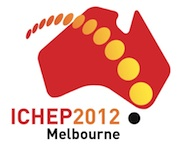Speaker
Dr
Axel Maas
(Friedrich Schiller University Jena (DE))
Description
It is a remarkable fact that an interaction as weak as QED can sustain bound states. A similar feature naturally can also be expected for the weak interactions. In fact, it has been conjectured in the late seventies that to leading order in an expansion in the Higgs condensate such bound states will have the same mass as the corresponding elementary particle at tree level. Using non-perturbative numerical lattice simulations, evidence will be shown that this holds approximately true even beyond this leading order, provided an adequate renormalization scheme is chosen. This also resolves the apparent paradox that while the Higgs mass itself is both scheme and renormalization point dependent, the peak observed in a cross section is not. Interpreting the actual resonance as a Higgs-Higgs bound state dual to the elementary state gives a physical explanation for the presence of this peak. A similar construction can also be made for the W boson. Such an interpretation of the actually observed resonance peaks as bound states implies necessarily the possibility for excited states. If these should be sufficiently stable, they can show up as 'new particles' in the LHC data, even if they are completely within the standard model. Using once more lattice simulations some ideas are provided for the properties of such an excited "Higgs".
Author
Dr
Axel Maas
(Friedrich Schiller University Jena (DE))
